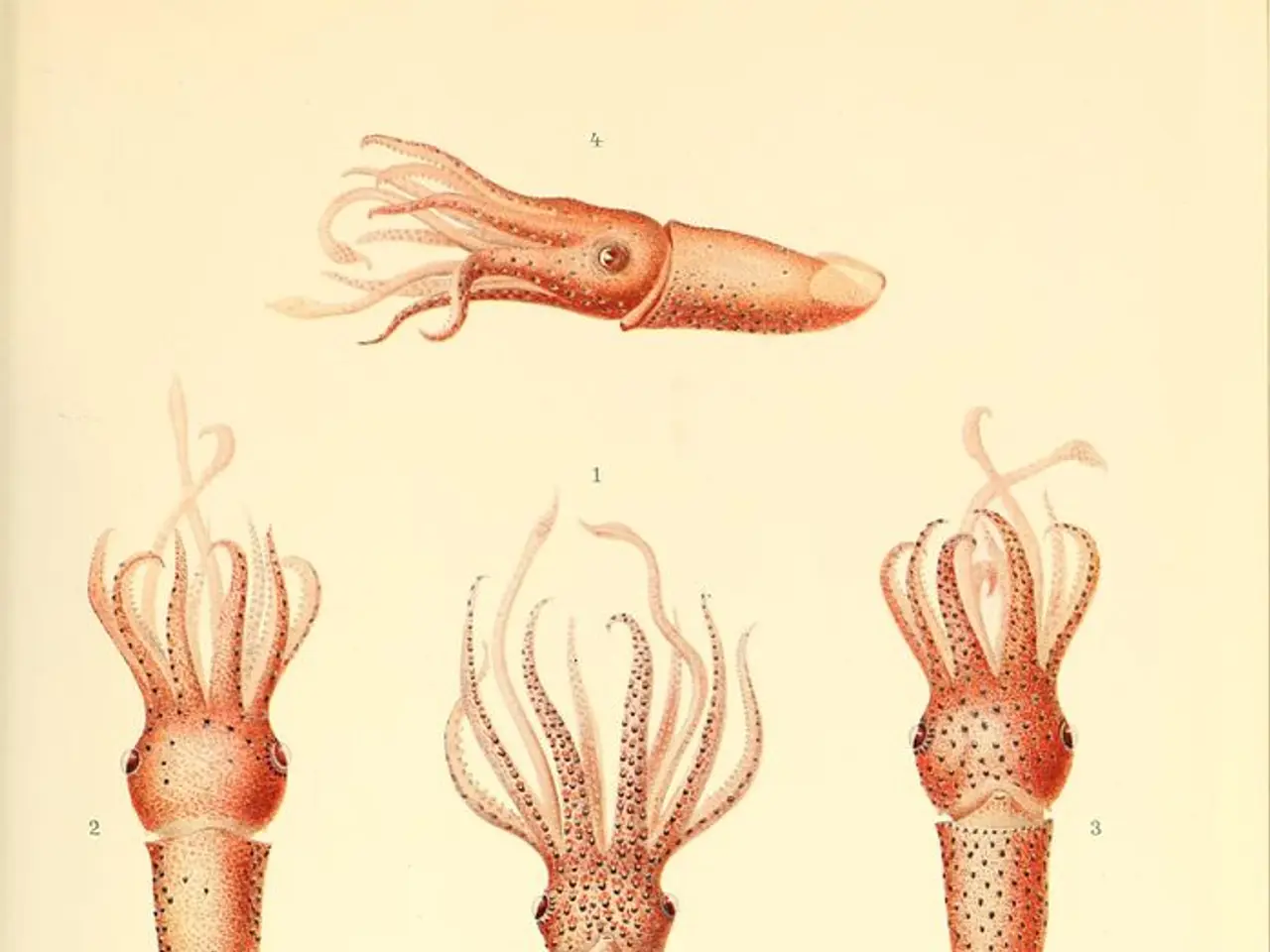The deadly nature of the blue-ringed octopus explained.
The blue-ringed octopus (genus Hapalochlaena) is a small, yet dangerous marine animal found in the Pacific and Indian oceans. Measuring between 5 and 9 inches (12 to 22 centimeters) long, these creatures are known for their potent neurotoxin called tetrodotoxin (TTX), which they acquire through symbiotic bacteria in their salivary glands [1][3].
Living in coral reefs and rocky seafloors at depths of around 66 to 164 feet (20 to 50 meters) deep, the blue-ringed octopus employs its venom in various ways as a defensive and offensive advantage [1][3]. In mating, for instance, males temporarily paralyze larger females with venom, while females lay eggs with venom to deter predators.
One of the most notable incidents involving a human encounter with a blue-ringed octopus occurred in Australia, where a 4-year-old boy was bitten. He experienced symptoms such as vomiting, blurry vision, and loss of mobility, but made a full recovery after 28 hours with medical intervention [2].
Tetrodotoxin blocks sodium channels in nerve cells, which can stop a creature's lung muscles from breathing and even their heart from beating [4]. It is 1,200 times more toxic to humans than cyanide and has no known antidote [5]. Therefore, seeking medical help and use of a ventilator is the best route for humans who have been bitten.
It is uncommon for a human to get bitten by a blue-ringed octopus, with only at least three reported deaths (two in Australia and one in Singapore) [6]. The common method of deployment for the venom is through direct bites. However, it's important to note that some humans who have been bitten by a blue-ringed octopus have no adverse effects [6].
All four species in the genus Hapalochlaena have tetrodotoxin, making them the four most venomous species of octopus [7]. The blue-ringed octopus's venom can paralyze creatures that breathe it in, posing a significant threat to marine life and humans alike.
[1] Symbiotic bacteria in the salivary glands of blue-ringed octopuses produce tetrodotoxin. [2] In one case, a 4-year-old boy was bitten by a blue-ringed octopus in Australia, experienced symptoms such as vomiting, blurry vision, and loss of mobility, but made a full recovery after 28 hours with medical intervention. [3] The blue-ringed octopus uses its venom in mating, with males temporarily paralyzing larger females with venom. Female blue-ringed octopuses lay eggs with venom to deter predators. [4] Tetrodotoxin blocks sodium channels in nerve cells, which can stop a creature's lung muscles from breathing and even their heart from beating. [5] Tetrodotoxin is 1,200 times more toxic to humans than cyanide and has no known antidote. [6] It is uncommon for a human to get bitten by a blue-ringed octopus, with only at least three reported deaths (two in Australia and one in Singapore). [7] All four species in the genus Hapalochlaena have tetrodotoxin, making them the four most venomous species of octopus.
In the realm of health and wellness, understanding neurological disorders is crucial, especially when considering the impact of tetrodotoxin, a potent neurotoxin found in the blue-ringed octopus, a marine creature known for its medical-conditions-inducing venom. This venom, which is 1,200 times more toxic to humans than cyanide and has no known antidote, can block sodium channels in nerve cells, potentially causing paralysis or even heart failure in humans.




